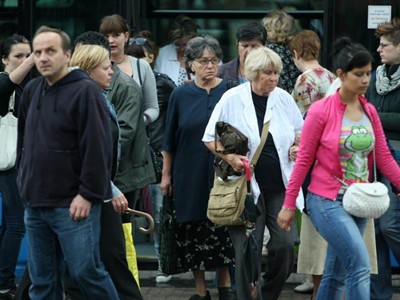The population of Croatia is relatively fairly small. A 2007 survey assessed the population in Croatia as being just under 4.5 million people and, unlike most countries the population of Croatia appears to be falling as opposed to growing.
The following statistics provide some interesting information pertaining to the population in Croatia:
The median age of the population in Croatia is 41 years
Approximately 15% of the population are below 15 years of age, whilst approximately 15% are over 65 years of age. These figures suggest a healthy age mix within the population
The life expectancy for the population of Croatia is approximately 75 years of age. When split by gender, males have an expectancy of 72 years, whilst females can be expected to live almost up until their 80th birthdays
The average female in Croatia can expect to have just under 1.5 children and, of these births, the mortality rate is almost 7 deaths per 1,000 births
The HIV rate in Croatia is extremely low when compared to similar rates globally. Less than 0.1% of the population are reported to have the virus
Most of the population live in the urban areas of Croatia (almost 60%)
Over a quarter of the population live in the capital city of Croatia and migration into the cities continues to grow
The largest ethnic groups in Croatia is Croat, with 90% of the overall population. Serbians are the second largest ethnic group in Croatia making up almost 5% of the population. This is then followed by a mix of Albanians, Czechs, Slovaks, Bosnians and Hungarians. The population of Serbians in Croatia has fallen dramatically. Fifteen years ago, Serbians were estimated as 12% of the population. However, the Yugoslav wars witnessed the migration of large numbers of Serbians and the majority of the population are now living in exile
The literacy rates in Croatia are extremely high and it is currently estimated that almost 98% of the population can read and write
The majority of individuals in Croatia are Roman Catholic. The remaining population is made up of other Christians (5%), Muslims (1.5%), Agnostic (5%) and other (1%)





